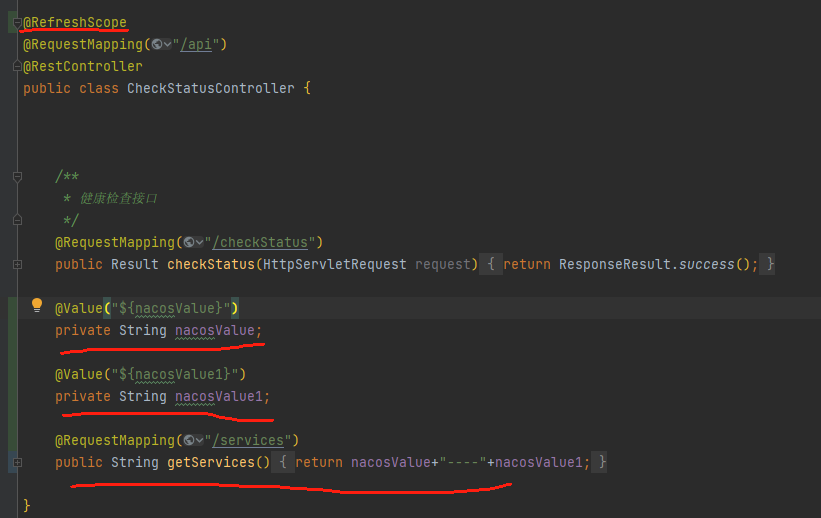Nacos的版本有严格的限制,一点不对可能就报错,但是用起来比较好用,灵活性比较大,毕竟是开源的,看不顺眼的都可以改;
Springboot集成nacos通用的有alibabaCloud、nacos-config、SDK方式
这里我们使用springboot2.7.18集成alibabaCloud的方式,中间也踩了不少的坑,可能与我原来项目的集成太多组件有关系,在此来记录一下
nacos server : 2.5.1 部署就很简单了,就不再描述。
1、Maven环境准备
<!--Spring Boot依赖-->
<dependency>
<groupId>org.springframework.boot</groupId>
<artifactId>spring-boot-starter-web</artifactId>
<exclusions>
<!-- 去掉springboot自带的日志 ,使用的是log4j2.yml-->
<exclusion>
<groupId>org.springframework.boot</groupId>
<artifactId>spring-boot-starter-logging</artifactId>
</exclusion>
</exclusions>
</dependency>
<dependency>
<groupId>org.springframework.boot</groupId>
<artifactId>spring-boot-starter-log4j2</artifactId>
</dependency>
<dependency>
<groupId>org.springframework.boot</groupId>
<artifactId>spring-boot-starter-test</artifactId>
<exclusions>
<!-- 去掉springboot自带的日志 ,使用的是log4j2.yml-->
<exclusion>
<groupId>org.springframework.boot</groupId>
<artifactId>spring-boot-starter-logging</artifactId>
</exclusion>
</exclusions>
<scope>test</scope>
</dependency>
<!-- 配置文件读取包-->
<dependency>
<groupId>com.alibaba.cloud</groupId>
<artifactId>spring-cloud-starter-alibaba-nacos-config</artifactId>
<version>2021.0.5.0</version> <!-- 请根据实际情况选择合适的版本 -->
</dependency>
<!-- 服务发现包-->
<dependency>
<groupId>com.alibaba.cloud</groupId>
<artifactId>spring-cloud-starter-alibaba-nacos-discovery</artifactId>
<version>2021.0.5.0</version> <!-- 请根据实际情况选择合适的版本 -->
</dependency>
<dependency>
<groupId>org.springframework.cloud</groupId>
<artifactId>spring-cloud-starter-bootstrap</artifactId>
<version>3.1.0</version>
</dependency>
2、新建bootstrap.yml文件
spring:
application:
name: im_web
cloud:
nacos:
server-addr: 127.0.0.1:8848
config:
server-addr: ${spring.cloud.nacos.server-addr}
enabled: true
refresh-enabled: true
username: nacos
password: nacos
group: gzp #用于应用分组
discovery:
# 注册中心地址
server-addr: ${spring.cloud.nacos.server-addr}
username: nacos
password: nacos
group: gzp #用于应用分组
3、对应使用配置的controller service compent
4、nacos服务发现

5、根据自己配置所在配置文件选择对应dataId

6、配置动态更改





















 2402
2402

 被折叠的 条评论
为什么被折叠?
被折叠的 条评论
为什么被折叠?








